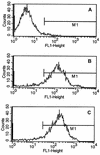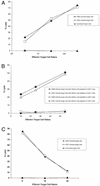Cross-reactive, cell-mediated immunity and protection of chickens from lethal H5N1 influenza virus infection in Hong Kong poultry markets
- PMID: 11222674
- PMCID: PMC115873
- DOI: 10.1128/JVI.75.6.2516-2525.2001
Cross-reactive, cell-mediated immunity and protection of chickens from lethal H5N1 influenza virus infection in Hong Kong poultry markets
Abstract
In 1997, avian H5N1 influenza virus transmitted from chickens to humans resulted in 18 confirmed infections. Despite harboring lethal H5N1 influenza viruses, most chickens in the Hong Kong poultry markets showed no disease signs. At this time, H9N2 influenza viruses were cocirculating in the markets. We investigated the role of H9N2 influenza viruses in protecting chickens from lethal H5N1 influenza virus infections. Sera from chickens infected with an H9N2 influenza virus did not cross-react with an H5N1 influenza virus in neutralization or hemagglutination inhibition assays. Most chickens primed with an H9N2 influenza virus 3 to 70 days earlier survived the lethal challenge of an H5N1 influenza virus, but infected birds shed H5N1 influenza virus in their feces. Adoptive transfer of T lymphocytes or CD8(+) T cells from inbred chickens (B(2)/B(2)) infected with an H9N2 influenza virus to naive inbred chickens (B(2)/B(2)) protected them from lethal H5N1 influenza virus. In vitro cytotoxicity assays showed that T lymphocytes or CD8(+) T cells from chickens infected with an H9N2 influenza virus recognized target cells infected with either an H5N1 or H9N2 influenza virus in a dose-dependent manner. Our findings indicate that cross-reactive cellular immunity induced by H9N2 influenza viruses protected chickens from lethal infection with H5N1 influenza viruses in the Hong Kong markets in 1997 but permitted virus shedding in the feces. Our findings are the first to suggest that cross-reactive cellular immunity can change the outcome of avian influenza virus infection in birds in live markets and create a situation for the perpetuation of H5N1 influenza viruses.
Figures





References
-
- Aeed P A, Briles W E, Zsigray R M, Collins W M. Influence of different B-complex recombinants on the outcome of Rous sarcomas in chickens. Anim Genet. 1993;24:177–181. - PubMed
-
- Bennink J R, Yewdell J W, Gerhard W. A viral polymerase involved in recognition of influenza virus-infected cells by a cytotoxic T-cell clone. Nature. 1982;296:75–76. - PubMed
Publication types
MeSH terms
Grants and funding
LinkOut - more resources
Full Text Sources
Medical
Research Materials

